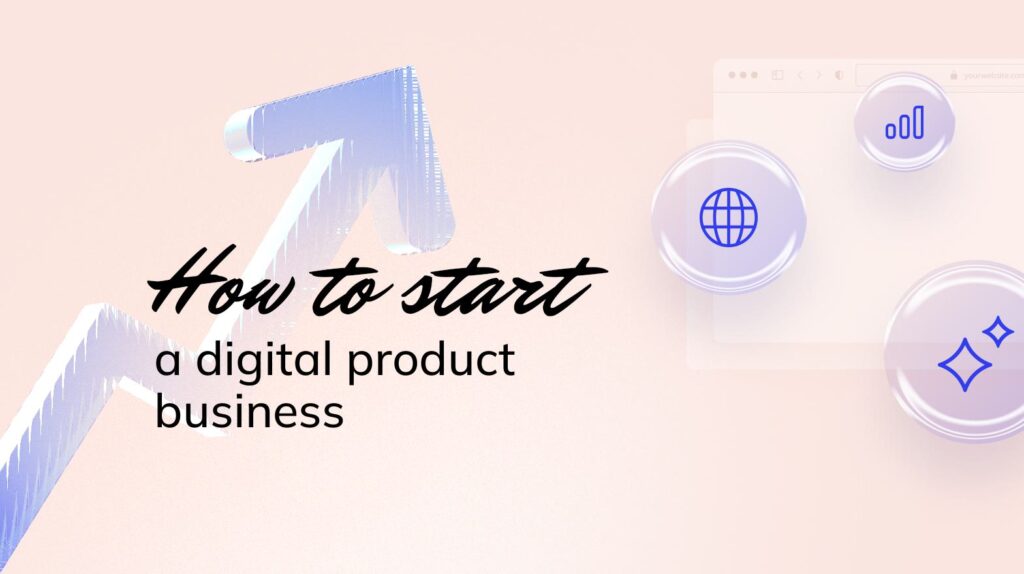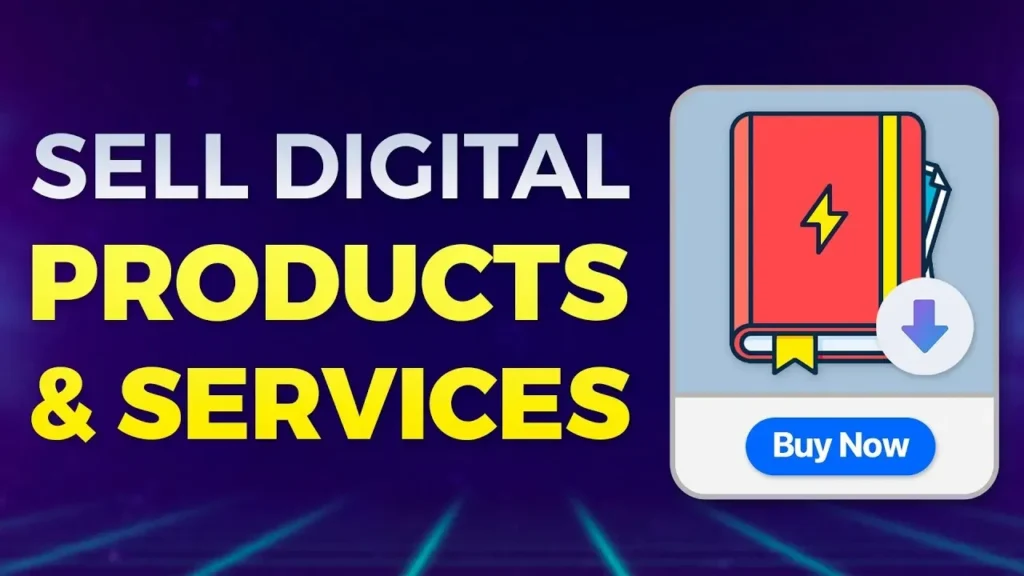Digital Product Business : Discover a step-by-step guide on how to start a digital product business in 2025. Learn about niche selection, product creation, marketing strategies, and more to build a successful online venture.
Table of Contents
In the digital age, the opportunity to create and sell digital products has never been more accessible. Whether you’re looking to generate passive income, share your expertise, or build a scalable online business, understanding how to start a digital product business is crucial. This guide will walk you through the essential steps to launch and grow your digital product venture successfully.
Understanding Digital Products
Digital products are intangible assets or media that can be sold and distributed online without the need for physical inventory. Common examples include:
- E-books: Informative guides or stories in digital format.
- Online Courses: Structured learning experiences delivered via video, text, or interactive content.
- Templates and Tools: Pre-designed resources like spreadsheets, design templates, or code snippets.
- Software and Apps: Programs or applications that solve specific problems or enhance productivity.
- Audio and Video Content: Podcasts, music tracks, or video tutorials.
The appeal of digital products lies in their scalability, low overhead costs, and the ability to automate sales and delivery processes.
🚀 Unlock Limitless Potential with PLR Digital Products! 💼
Dive into our exclusive collection of high-quality, ready-to-use PLR digital products designed to elevate your business. From insightful guides to engaging children’s content, our offerings are crafted to save you time and boost your profits. With master resell rights, you have the freedom to customize and sell these products as your own.
✅ Why Choose Go PLR?
- 💰 Unbeatable Prices: Premium products starting at just $2.99.
- 🔒 Secure Transactions: SSL-encrypted payments for your peace of mind.
- 🚚 Fast Delivery: Instant access to your digital purchases.
- 🛠️ Versatile Use: Edit, brand, and sell with complete freedom.WebFX
- 🛒 Diverse Selection: A wide range of niches to cater to your audience.
🌟 Customer Testimonials:
“Fast shipping and excellent customer service. The product was even better than expected. I will definitely be a returning customer.”
— Jennifer Lewis
“Great user experience on your website. I found exactly what I was looking for at a great price. I will definitely be telling my friends.”
— Alicia Heart
🎯 Take Action Now! Don’t miss out on this opportunity to expand your digital product offerings. Visit Go PLR Digital Products and start building your digital empire today!
Step 1: Identify Your Niche and Target Audience
Choosing the right niche is foundational to your digital product business. Your niche should align with your interests, expertise, and market demand. Consider the following when selecting a niche:
- Passion and Knowledge: Focus on areas where you have both interest and expertise.
- Market Demand: Use tools like Google Trends and Google Keyword Planner to assess search volume and trends.
- Competition Analysis: Evaluate existing products and identify gaps or opportunities for differentiation.
Understanding your target audience’s needs, preferences, and pain points will enable you to create products that resonate and provide value.
Step 2: Validate Your Product Idea
Before investing time and resources into product development, validate your idea to ensure there’s a market for it. Strategies include:
- Surveys and Polls: Gather feedback from potential customers through online surveys.
- Pre-Selling: Offer your product for sale before it’s fully developed to gauge interest.
- Landing Pages: Create a simple website or page that describes your product and collects email addresses from interested users.
Validation helps minimize risk and ensures you’re creating something that people are willing to pay for.
Step 3: Create Your Digital Product
Once you’ve validated your idea, it’s time to develop your product. Depending on the type, this may involve:
- Content Creation: Writing, recording, or designing the core material.
- Design and Formatting: Ensuring your product is visually appealing and user-friendly.
- Testing: Gathering feedback from beta users to refine and improve the product.
Utilize tools like Canva for design, Teachable or Kajabi for course creation, and Audacity for audio editing.
Step 4: Set Up Your Online Store
To sell your digital products, you’ll need an online platform. Options include:
- E-commerce Platforms: Use services like Shopify or WooCommerce to create a customizable store.
- Marketplaces: Sell through established platforms like Etsy or Amazon.
- Your Own Website: Build a dedicated site to have full control over branding and customer experience.
Ensure your store includes clear product descriptions, pricing, and a seamless checkout process.
Step 5: Develop a Marketing Strategy
Effective marketing is essential to attract and convert customers. Key components include:
- Search Engine Optimization (SEO): Optimize your website and content for relevant keywords to improve visibility.
- Content Marketing: Create valuable content like blog posts, videos, or podcasts to engage your audience.
- Email Marketing: Build an email list to nurture leads and promote new products.
- Social Media: Leverage platforms like Instagram, Facebook, and LinkedIn to reach and interact with potential customers.
Consider collaborating with influencers or running paid advertising campaigns to expand your reach.

Step 6: Launch and Promote Your Product
A successful launch can generate momentum and drive initial sales. Steps to consider:
- Pre-Launch Buzz: Tease your product through social media, email campaigns, and content marketing.
- Launch Offers: Provide limited-time discounts or bonuses to incentivize early purchases.
- Customer Testimonials: Share feedback from beta testers or early users to build trust.
Monitor performance metrics and gather customer feedback to inform future improvements.
Step 7: Scale Your Business
As your digital product business grows, explore opportunities to scale:
- Product Line Expansion: Develop complementary products or bundles.
- Automation: Implement systems for email marketing, customer support, and sales processes.
- Affiliate Programs: Encourage others to promote your products in exchange for a commission.
- Analytics: Use tools like Google Analytics to track performance and make data-driven decisions.
Continuous optimization and innovation will help sustain and grow your business over time.
Conclusion
Starting a digital product business offers a flexible and scalable path to entrepreneurship. By carefully selecting your niche, validating your ideas, creating high-quality products, and implementing effective marketing strategies, you can build a successful online venture.
If you’re ready to take the next step, Go PLR Digital Products offers a wide range of ready-made digital products with master resell rights. Whether you’re looking for e-books, templates, or courses, our collection can help you jumpstart your business with minimal upfront effort.
Embark on your digital product journey today with Go PLR Digital Products. Our extensive library of high-quality, customizable products empowers you to start selling immediately. Don’t wait—visit our website now and explore the possibilities that await you in the digital marketplace.



